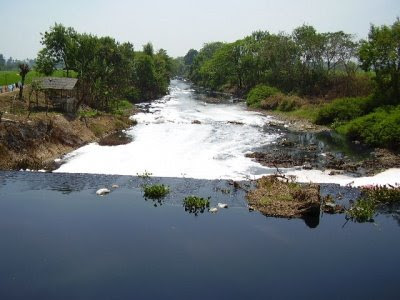The Jakarta Post, JAKARTA | Sat, 02/28/2009 10:31 AM
The city environment board (BPLHD) has called on residents and building developers to stop making new groundwater wells and start using tap water.
The call was made following reports that groundwater exploitation had led to water shortages and land subsidence.
BPLHD official Dian Wiwekowati said many city residents were still reluctant to shift to tap water.
“Many residents prefer to dig their existing wells deeper or make new wells to get sufficient water, rather than use piped water,” she said Friday at a press conference.
“Commercial buildings like malls, apartments, hotels and office buildings are doing the same, making water supplies in large parts of the city critical.”
Among the most critical areas are Tebet and Pasar Minggu in South Jakarta, and Duren Sawit, Ciracas and Pasar Rebo in East Jakarta.
Residents of those areas have to dig more than 16 meters deep to get groundwater, and another 8 meters deeper in the dry season.
Residents in less critical areas, like Mampang Prapatan and Kebayoran Baru in South Jakarta, and Cempaka Putih in Central Jakarta, need to dig 12 to 16 meters deep for water, and 18 to 24 meters in the dry season.
Dian said the BPLHD would limit the issuance of permits to build artesian wells for new commercial buildings, as existing wells now contributed more than 80 percent of total groundwater use in the city.
“We will allow them to make their own wells if the tap water companies are not able to provide their entire water needs,” she said.
In 2004, the Jakarta mining agency drew up a memorandum of understanding with private water companies PT PAM Lyonnaise Jaya (Palyja) and PT Aetra Air Jakarta and the city’s water operator PT PAM Jaya, requiring the private operators to supply clean water to minimize groundwater use.
However, residents and businesses operators continue to use groundwater, after complaining about the operators’ poor services, including low quality of tap water, disrupted services and limited pipeline networks.
Last year, the city administration said more than 1,000 companies in the city had overused groundwater.
Aetra business service director Rhamses Simanjuntak said his company was currently working to improve services.
To pressure residents and business operators to limit groundwater consumption, Dian said her agency would ask the city administration to increase tax on groundwater.
“We are currently preparing a draft on groundwater tax adjustment and will propose it to the city council this year,” she said.
Under the proposal, the price of groundwater for elite residential areas will increase from Rp 525 per cubic meter to Rp 3,300, and for industry from Rp 8,800 to Rp 23,000.
Dian said experts from the Bandung Institute of Technology (ITB) had conducted research last year to help the agency decide the ideal rate. (hwa)









